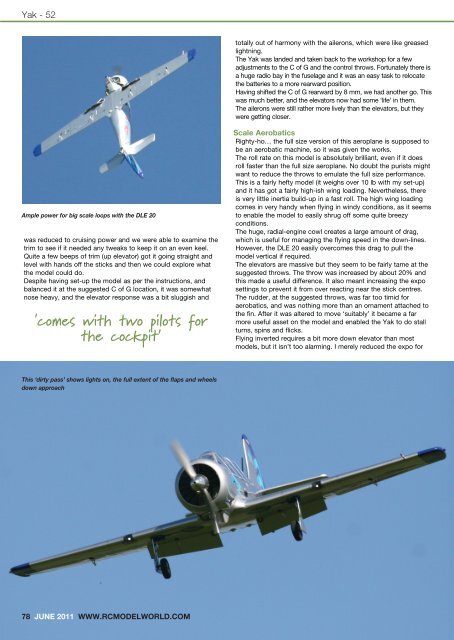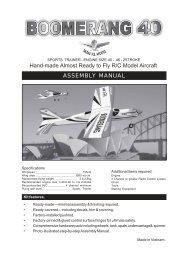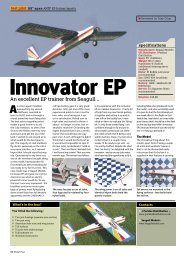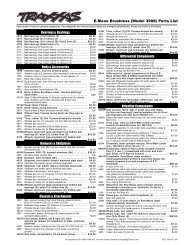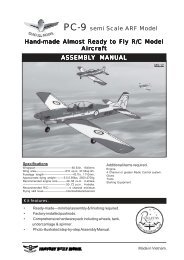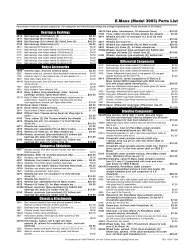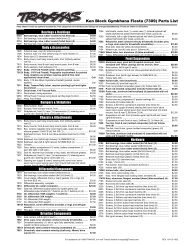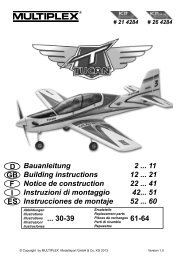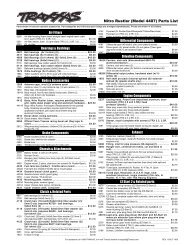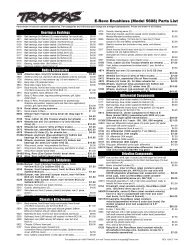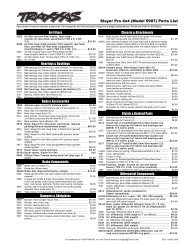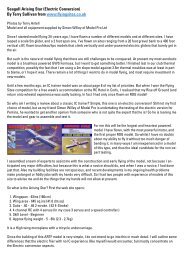Seagull Yak 52 review - J Perkins
Seagull Yak 52 review - J Perkins
Seagull Yak 52 review - J Perkins
- No tags were found...
Create successful ePaper yourself
Turn your PDF publications into a flip-book with our unique Google optimized e-Paper software.
<strong>Yak</strong> - <strong>52</strong>totally out of harmony with the ailerons, which were like greasedlightning.The <strong>Yak</strong> was landed and taken back to the workshop for a fewadjustments to the C of G and the control throws. Fortunately there isa huge radio bay in the fuselage and it was an easy task to relocatethe batteries to a more rearward position.Having shifted the C of G rearward by 8 mm, we had another go. Thiswas much better, and the elevators now had some ‘life’ in them.The ailerons were still rather more lively than the elevators, but theywere getting closer.Ample power for big scale loops with the DLE 20was reduced to cruising power and we were able to examine thetrim to see if it needed any tweaks to keep it on an even keel.Quite a few beeps of trim (up elevator) got it going straight andlevel with hands off the sticks and then we could explore whatthe model could do.Despite having set-up the model as per the instructions, andbalanced it at the suggested C of G location, it was somewhatnose heavy, and the elevator response was a bit sluggish and'comes with two pilots forthe cockpit’Scale AerobaticsRighty-ho… the full size version of this aeroplane is supposed tobe an aerobatic machine, so it was given the works.The roll rate on this model is absolutely brilliant, even if it doesroll faster than the full size aeroplane. No doubt the purists mightwant to reduce the throws to emulate the full size performance.This is a fairly hefty model (it weighs over 10 lb with my set-up)and it has got a fairly high-ish wing loading. Nevertheless, thereis very little inertia build-up in a fast roll. The high wing loadingcomes in very handy when flying in windy conditions, as it seemsto enable the model to easily shrug off some quite breezyconditions.The huge, radial-engine cowl creates a large amount of drag,which is useful for managing the flying speed in the down-lines.However, the DLE 20 easily overcomes this drag to pull themodel vertical if required.The elevators are massive but they seem to be fairly tame at thesuggested throws. The throw was increased by about 20% andthis made a useful difference. It also meant increasing the exposettings to prevent it from over reacting near the stick centres.The rudder, at the suggested throws, was far too timid foraerobatics, and was nothing more than an ornament attached tothe fin. After it was altered to move ‘suitably’ it became a farmore useful asset on the model and enabled the <strong>Yak</strong> to do stallturns, spins and flicks.Flying inverted requires a bit more down elevator than mostmodels, but it isn’t too alarming. I merely reduced the expo forThis ‘dirty pass’ shows lights on, the full extent of the flaps and wheelsdown approach78 JUNE 2011 WWW.RCMODELWORLD.COM


